UPSC Daily Current Affairs: 16th October 2024 | Current Affairs & Hindu Analysis: Daily, Weekly & Monthly PDF Download
GS2/International Relations
UAE to review India’s concerns on surge in Silver, Platinum Alloy imports
Source: Business Standard

Why in News?
India has expressed its concerns regarding the substantial increase in imports of silver products, platinum alloys, and dry dates from the UAE under the existing Free Trade Agreement (FTA).
Issues Raised by India:
- The Global Trade Research Initiative (GTRI) has urged for an immediate review of the FTA, highlighting that it permits unlimited imports of gold, silver, platinum, and diamonds at zero tariffs.
- GTRI contends that many of these imports do not comply with the Rules of Origin requirements, and therefore should not qualify for the tariff concessions.
- India's imports of gold and silver from the UAE surged by 210%, reaching $10.7 billion in the fiscal year 2023-24.
- India allows customs duty concessions of 7% on silver and 1% on 160 metric tonnes of gold as part of the agreement.
- India has requested that the Indian Jewellery Exposition Centre in Dubai be designated as a Designated Zone to enable domestic jewellery manufacturers to take advantage of concessional duties, including those not registered under UAE's domestic regulations.
- The request for the recognition of the i-CAS (India Conformity Assessment Scheme) Halal scheme aims to streamline the certification process and enhance exports of animal products. The UAE has shown a willingness to review this request after consulting with internal stakeholders and federal tax authorities.
India-UAE Trade Relations:
- The UAE is India's third-largest trading partner, with a total bilateral trade volume of $83.65 billion.
- Trade between India and the UAE has expanded significantly, growing from $180 million in the 1970s to $85 billion in the fiscal year 2022-23.
Comprehensive Economic Partnership Agreement (CEPA):
- Signed in February 2022, India became the first country to enter into such an agreement with the UAE.
- The CEPA has reduced tariffs on 80% of goods and provides zero-duty access for 90% of Indian exports to the UAE.
Non-Oil Trade Target:
- Aiming to reach $100 billion in non-oil trade by 2030 is deemed achievable based on current growth patterns.
Investment from UAE:
- The UAE's investments in India are estimated at around $20-21 billion, with $15.5 billion attributed to Foreign Direct Investment (FDI).
- Abu Dhabi Investment Authority (ADIA) has invested in various projects, including the NIIF Master Fund and renewable energy initiatives.
India’s Exports to UAE:
- The UAE ranks as India’s second-largest export destination after the U.S., with exports totaling $31.61 billion.
- Key exports include petroleum products, gems, food items, textiles, and engineering goods.
India’s Imports from UAE:
- The UAE is crucial for India's energy security.
- India imports minerals and chemicals from the UAE, which is the fourth-largest supplier of crude oil and the second-largest supplier of LNG and LPG.
Previous Year Question:
[2022] How will the I2U2 (India, Israel, UAE, and USA) grouping transform India’s position in global politics?
GS3/Economy
The Need for More Containers to Boost India's Trade
Source: Economic Times
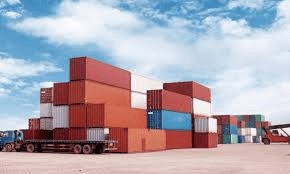
Why in News?
India’s trade is experiencing rapid growth, with an increasing reliance on containerized transport to enhance the swift movement of goods both domestically and internationally. However, a significant challenge that threatens to hinder this trade expansion is the current shortage of containers. At present, India’s container production capacity is insufficient to meet its ambitious trade goals.
Containers play a pivotal role in global trade. These standardized, box-like units facilitate efficient transportation of goods across rail, road, and maritime routes. The advent of containerization has transformed global trade by cutting down transportation times, minimizing port delays, and ensuring smooth cargo movement. Key advantages of containers include:
Efficiency: Once goods are packed in containers, they can be transported over long distances without disturbance.
Global Standardization: Containers are available in standardized sizes, such as the 20-foot equivalent unit (TEU), which makes them compatible with various transport systems worldwide.
- Critical Availability: The importance of containers is so significant that they are often dubbed as the "untold story of globalization." Without an adequate supply of containers, even the most advanced infrastructure cannot effectively manage the trade of goods.
- Despite India's important location on the East-West trade route, its chance to become a major global trade center is limited by its low container production capabilities.
- Currently, India produces between 10,000 and 30,000 containers each year, which is a small portion of what is needed to keep up with expected trade growth.
- In comparison, China produces about 2.5 to 3 million containers annually, leading the global market.
- India's production costs are also much higher, costing between $3,500 and $4,800 per container, while China's costs range from $2,500 to $3,500.
- As a result, India often has to lease containers, mainly from China, which increases costs and limits its ability to fully utilize its ports.
- Boosting container production is very important for India. Ports like Vadhavan and Galathea Bay, along with projects like the India-Middle East-Europe Economic Corridor, are planned with the hope of having more container capacity.
- If container production does not grow, these projects may not work as planned.
- Right now, India's container handling market is expected to grow from 11.4 million TEUs in 2023 to 26.6 million TEUs by 2028.
- Without enough containers, Indian ports will struggle to handle this rising demand, causing global shipping companies to choose other ports like Colombo, Dubai, and Hong Kong instead of Indian ports.
- The shortage of containers in India is made worse by global issues.
- Events such as the Russia-Ukraine war and problems in West Asia have disrupted shipping routes, leading to longer trips and delays in container availability.
- Increasing incidents of piracy and the closing of important ports due to political tensions have also raised shipping costs.
- These global challenges highlight the urgent need for India to create a reliable and secure supply of containers to avoid trade disruptions.
To tackle the container shortage, the Indian government has initiated several measures under the Make in India program aimed at bolstering local container production. Key initiatives include:
- Public-Private Partnerships (PPP): Collaborations between the Container Corporation of India and private sector entities aim to enhance container manufacturing.
- Subsidies and Incentives: The government is considering direct subsidies and viability gap funding to support container manufacturers.
- Production Linked Incentives (PLI): These incentives are in consideration but have not yet been implemented.
- Incentives for Raw Materials: Relaxation of GST for raw materials used in container production would lower input costs, making domestic production more competitive.
- Long-term Contracts: Establishing long-term agreements between Indian shippers and container manufacturers could stabilize the market and build confidence.
- Tracking and Management: The government is developing a Unified Logistics Interface Platform (ULIP) and a Logistics Data Bank to enhance container tracking and reduce turnaround times for export containers, thereby alleviating shortages.
Boosting container production has numerous long-term benefits, including:
- Lower Freight Costs: Increased local container production will reduce reliance on leased containers from China, thus lowering freight expenses for Indian shippers.
- Improved Port Utilization: Enhanced container availability will allow Indian ports to accommodate more mother ships, strengthening India’s position in global trade.
- Job Creation: Growth in the container manufacturing sector will lead to job creation and stimulate economic development within India.
- Resilience in Global Trade: A robust domestic container supply will make India less susceptible to global disruptions and fluctuations in freight rates.
In conclusion, India's container shortage poses a significant obstacle to its trade aspirations. However, the government is proactively working to mitigate this issue through initiatives such as PPP collaborations. By increasing container production, decreasing manufacturing costs, and enhancing logistics, India can improve its standing in global trade, reduce dependency on foreign suppliers, and ensure efficient transport of goods through its strategically positioned ports. The success of these initiatives will be vital in achieving India’s ambition of becoming a global trade powerhouse.
GS2/Polity
SC norms to curb misuse of abetment of suicide law
Source: Hindustan Times
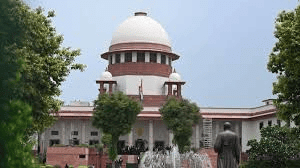
Why in news?
Recently, the Supreme Court emphasized the need for police and courts to refrain from "unnecessary prosecutions" in abetment of suicide cases related to the workplace. This statement came during the hearings of a case concerning a salesman who took his own life following alleged harassment from his superiors.
Abetment of suicide involves encouraging or aiding someone to commit suicide. Under the Indian Penal Code (IPC) and the Bharatiya Nyaya Sanhita (BNS) 2023, 'abetment' is defined as follows:
- A person abets a task if they instigate someone to perform that task.
- Engage in conspiracy with others to perform that task.
- Intentionally assist, through any act or omission, in performing that task.
To establish abetment in legal cases, it is vital to demonstrate a clear link between the accused's actions and the deceased's decision to end their life, which usually involves direct encouragement or strong influence.
Punishment
According to Section 306 of the IPC (Section 108 of BNS), the punishment for abetment of suicide can extend to ten years of imprisonment and a fine. This offence is tried in a Sessions Court and is classified as:
- Cognizable offence: Police can arrest without a warrant.
- Non-bailable offence: Bail is granted at the court's discretion, not as a right.
- Non-compoundable offence: The case cannot be withdrawn, even if both parties reach a compromise.
The FIR stated that senior officers had pressured a salesman named Rajeev Jain to accept the company's Voluntary Retirement Scheme (VRS) in 2006. Despite being with the company for over 23 years, Jain resisted this pressure, which allegedly led to his suicide by hanging. His brother filed a complaint against the senior officers, claiming they had abetted Jain's suicide.
The Allahabad High Court, while reviewing the officers' plea to dismiss the case, found a direct connection between a meeting where Jain felt "humiliated and threatened" and his subsequent suicide.
Ruling by the SC
- Overturned Previous Judgment: The Supreme Court nullified a 2017 Allahabad High Court decision that claimed insufficient evidence existed to establish a prima facie case of abetment in the suicide of an employee who felt harassed.
- Direct Incitement Required: The SC stressed that abetment of suicide necessitates clear and alarming encouragement or incitement by the accused. It differentiated between emotional disputes and clear instances of abetment.
Categories of Relationships
- Personal Relationships: In intimate relationships, emotional conflicts may lead to psychological distress, but simple arguments are insufficient for abetment.
- Professional Relationships: In workplace relationships, disputes must escalate to severe harassment to qualify as abetment.
Requirements for Conviction
For a conviction under Section 306 of the IPC, it must be proven that the accused intended to provoke the suicide or acted in a manner that left the deceased feeling trapped. The court highlighted the importance of context in establishing the accused's intent, rather than assuming it based solely on the suicide itself.
M Mohan v The State (2011)
The SC set a high standard for proving abetment of suicide, stating that specific intent must be shown through direct actions that compelled the deceased to consider suicide as their only option.
Karnataka High Court Ruling (July 2023)
In a recent case involving the suicide of an employee from the LGBT community, the Karnataka High Court refused to quash proceedings against three accused individuals. The court determined that the accused had harassed the employee and threatened sexual exploitation, which contributed to the suicide.
Ude Singh v State of Haryana (2019)
In this case, the SC reaffirmed that proving abetment of suicide relies heavily on the specific facts of each situation. The ruling indicated that the accused could be considered guilty if evidence showed they intended for the suicide to occur and that their actions were directed towards that end.
GS2/International Relations
Who are the Hibakusha?
Source: Nobel Prize

Why in News?
Recent news highlights the award of the 2024 Nobel Peace Prize to Nihon Hidankyo, the organization dedicated to supporting the survivors of the atomic bombings of Hiroshima and Nagasaki, known as the hibakusha.
Definition of Hibakusha: Hibakusha is a Japanese term that refers to individuals who survived the atomic bomb attacks on Hiroshima and Nagasaki in 1945.
- Historical Context:
- On August 6, 1945, the USA dropped the atomic bomb named Little Boy on Hiroshima.
- Three days later, on August 9, 1945, a second bomb known as Fat Man was dropped on Nagasaki.
- These bombings resulted in over 200,000 deaths by the end of 1945.
- Survivors and Their Status:
- Those who survived the bombings with injuries became known as hibakusha, which translates to "bomb-affected people."
- There are more than 160 individuals referred to as niju hibakusha, who were present at both bombings.
- As of now, the total number of living hibakusha is officially recorded at 106,825, with an average age of 85.6 years, according to Japan's Ministry of Health, Labor and Welfare.
- Government Support: The Japanese government provides various forms of support to hibakusha, including medical allowances to aid in their health care.
- Social Challenges: Despite government support, hibakusha and their families face discrimination in society. This stigma arises from beliefs that the effects of radiation exposure may be hereditary or contagious, impacting their social standing and interactions.
GS3/Environment
What is the Food and Agriculture Organisation (FAO)?
Source: Business Standard
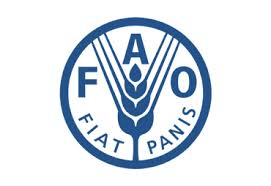
Why in News?
World Food Day is celebrated annually on October 16 across the globe to honour the establishment of the Food and Agriculture Organisation (FAO).
About Food and Agriculture Organisation (FAO):
- The FAO is a specialized agency of the United Nations (UN) dedicated to leading global efforts to combat hunger.
- Established in October 1945, it is recognized as the oldest permanent specialized agency within the UN system.
- Its primary mandate includes enhancing nutrition, boosting agricultural productivity, improving living standards in rural communities, and contributing to overall economic development worldwide.
- The organization plays a pivotal role in coordinating governmental and technical agency efforts aimed at advancing agriculture, forestry, fisheries, and managing land and water resources.
Other Functions:
- The FAO conducts extensive research to inform its initiatives and policies.
- It offers technical assistance on various agricultural projects in different countries.
- The organization runs educational programs via seminars and training centers to enhance knowledge and skills.
- It maintains comprehensive information and support services, including statistical data on global agricultural production, trade, and consumption.
- The FAO publishes a variety of periodicals, annual reports, and research bulletins to disseminate knowledge and findings.
Headquarters:
- Located in Rome, Italy, the FAO serves as a central hub for its global operations.
Members:
- The FAO comprises 194 Member States along with the European Union as a member organization.
Funding:
- The organization is funded entirely by contributions from its member countries.
In situations of food scarcity or conflict, the FAO typically does not engage directly in food relief efforts. Instead, these responsibilities are usually handled by the World Food Program, which operates within the UN framework.
Reports published by the FAO:
- The State of the World's Forests (SOFO)
- The State of World Fisheries and Aquaculture (SOFIA)
- The State of Agricultural Commodity Markets (SOCO)
- The State of Food Security and Nutrition in the World (SOFI)
GS3/Economy
‘Yield’ can’t be the sole indicator for agriculture
Source: The Hindu
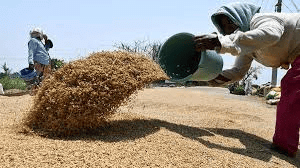
Why in news?
Government must embrace a new approach where the success of agriculture is defined by its capacity to nourish people, support livelihoods, and safeguard our planet for future generations.
The limitations of using yield as the sole indicator of agricultural success are significant and multifaceted:
- Nutritional Quality Neglect: The focus on yield has resulted in a decline in the nutritional profile of crops. High-yielding varieties often exhibit lower micronutrient densities, which is evident in the reduced levels of zinc and iron in staple crops like rice and wheat.
- Increased Input Costs: A higher yield does not necessarily equate to increased income for farmers. The financial burden of achieving additional yield can be substantial, particularly given the marked decline in responsiveness to fertilizers since the 1970s.
- Biodiversity Loss: Emphasizing a limited number of high-yielding varieties has led to a significant loss of diverse, local crop varieties. For instance, India has lost approximately 104,000 rice varieties since the Green Revolution.
- Environmental Impact: Intensive farming aimed at maximizing yields can degrade soil health, diminish water availability, and disrupt ecosystems, ultimately making agricultural practices less sustainable.
- Reduced Resilience: Prioritizing yield compromises crops' resilience to extreme weather events, including floods, droughts, and heatwaves, making them more vulnerable to climate change.
To assess agricultural sustainability effectively, it is crucial to consider other indicators alongside yield:
- Nutritional Output Per Hectare: This measurement focuses on both the quantity and quality of food produced, enhancing nutritional security.
- Soil Health Metrics: Evaluating soil biological activity and organic carbon content is essential for ensuring long-term soil fertility and productivity.
- Water-Use Efficiency: Metrics that track water usage relative to crop production promote more sustainable water conservation practices.
- Farm Biodiversity: Assessing crop diversity at both the farm and regional levels (Landscape Diversity Score) enhances resilience to pests, diseases, and climate variability.
- Economic Resilience Metrics: Indicators such as income diversification through intercropping or livestock rearing help gauge farmers' economic stability.
- Environmental Impact Measures: Evaluating parameters like carbon footprint and ecosystem services provides insight into the broader consequences of agricultural practices.
Farmers can adopt various practices to enhance sustainability beyond merely increasing yield:
- Intercropping: Cultivating multiple crops together (e.g., sugarcane alongside vegetables) can yield year-round income and improve soil health.
- Agroecological Approaches: Techniques such as crop rotation, organic farming, and reduced pesticide usage help maintain biodiversity and soil fertility.
- Water Management Techniques: Implementing strategies like drip irrigation and utilizing AI-powered tools for optimal irrigation can improve water use efficiency.
- Integrated Pest Management (IPM): This approach combines biological, mechanical, and chemical methods to reduce reliance on harmful pesticides.
- Conservation Agriculture: Employing practices like no-till farming and mulching enhances soil structure and moisture retention.
- Adopting Climate-Resilient Varieties: Growing varieties that are drought-tolerant or flood-resistant helps mitigate the impacts of climate change.
Mains PYQ:
Discuss the various economic and socio-cultural forces that are driving increasing feminization of agriculture in India.
GS2/Polity
Article 142 of the Indian Constitution
Source: Times of India
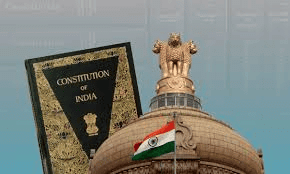
Why in News?
The Supreme Court recently rejected a Public Interest Litigation (PIL). The PIL sought to mandate the inclusion of sexual offences against men, transgender individuals, and animals in the Bharatiya Nyaya Sanhita (BNS). The BNS is intended to replace the Indian Penal Code (IPC).
- The petitioner contended that the new BNS did not account for Section 377 of the IPC.
- Section 377 had previously criminalized 'unnatural sex' and carnal relations involving humans and animals.
- In the landmark case Navtej Singh Johar v. Union of India (2018), the Supreme Court decriminalized consensual sexual acts between adults.
- However, non-consensual homosexual acts continued to be penalized under this law.
- The BNS currently lacks provisions for criminalizing sexual offences against men, transgender individuals, and animals.
- During the proceedings, the bench was led by Chief Justice DY Chandrachud, along with Justices JB Pardiwala and Manoj Misra.
- The Court clarified that it does not possess the authority to compel Parliament to formulate or reinstate any offence.
- Such legislative actions are strictly within Parliament's scope.
About Article 142:
Details
- Article 142 grants the Supreme Court the discretionary authority to issue orders or decrees deemed necessary for delivering complete justice in cases before it.
- This article allows the Court to operate beyond the confines of statutory law when necessary.
Purpose
- It ensures that justice is served in situations where conventional laws may not offer sufficient remedies.
- The article aims to empower the Supreme Court to effectively address extraordinary circumstances.
Key Clauses
- Article 142(1): Empowers the Supreme Court to issue enforceable orders across India to achieve complete justice.
- Article 142(2): Grants the Court the power to secure attendance, facilitate the discovery of documents, or impose penalties for contempt.
Notable Cases
- Bhopal Gas Tragedy (1989): The Supreme Court awarded $470 million in compensation, circumventing the usual limitations of ordinary law.
- Ayodhya Case (2019): The Court directed the establishment of a trust for the construction of the Ram Mandir.
- Liquor Sale Ban (2016): The Supreme Court imposed a 500-metre ban on liquor outlets along highways, extending beyond central government orders by invoking Article 142.
Constructive Application
- Invoked for initiatives related to environmental protection, such as the cleanup of the Taj Mahal.
- Addresses justice for undertrials by tackling systemic delays within the judicial process.
Controversies
- There have been accusations of judicial overreach in certain instances, where the Supreme Court's actions appeared to infringe on the principle of separation of powers.
- The case of Supreme Court Bar Association v. Union of India clarified that Article 142 should complement, rather than replace, existing laws.
Impact on Governance
- Empowers the Supreme Court with a mechanism to uphold justice, while also raising discussions about checks and balances within a democratic framework.
PYQ:
[2019]
With reference to the Constitution of India, prohibitions or limitations or provisions contained in ordinary laws cannot act as prohibitions or limitations on the constitutional powers under Article 142. It could mean which one of the following?
(a) The decisions taken by the Election Commission of India while discharging its duties cannot be challenged in any court of law.
(b) The Supreme Court of India is not constrained in the exercise of its powers by laws made by the Parliament.
(c) In the event of grave financial crisis in the country, the President of India can declare Financial Emergency without the counsel from the Cabinet.
(d) State Legislatures cannot make laws on certain matters without the concurrence of Union Legislature.
GS2/Polity
What is the Doctrine of Lis Pendens?
Source: Live Law

Why in News?
The Supreme Court has reaffirmed that if a transaction is found to be affected by the doctrine of lis pendens, defenses such as being a bona fide purchaser and claiming a lack of notice regarding the sale agreement are not valid.
About Doctrine of Lis Pendens:
- Lis pendens translates to "a pending legal action".
- This legal maxim means that during ongoing litigation, new transactions related to the subject matter should not occur to preserve the status quo.
- The principle emphasizes that the property involved in a lawsuit should not be transferred to third parties while the litigation is ongoing.
- This doctrine is outlined in Section 52 of the Transfer of Property Act, 1882, which states that any transfer of immovable property during pending litigation does not affect the rights of the parties involved.
- The outcome of the litigation, decided by a competent court, will bind any purchaser who acquired the property during the litigation period.
- This doctrine serves to protect the rights and interests of parties involved in a lawsuit concerning a specific property.
Effect of Doctrine of Lis Pendens:
- The doctrine does not invalidate or nullify the transfer but makes it subject to the outcome of the litigation.
- Anyone purchasing property while a lawsuit is pending is bound by any judgment against the previous owner, regardless of whether they were aware of the litigation.
Conditions for Applicability:
- The lawsuit must be actively ongoing.
- The suit must be filed in a court of competent jurisdiction.
- The title of the immovable property must be specifically and directly in question.
- The lawsuit must directly impact the rights of the other party.
- The property in question must be in the process of being transferred by either party.
- The lawsuit should not be collusive, meaning it should not involve deceit or fraud to obtain a decree.
Non-Applicability of Doctrine:
- The doctrine does not apply to sales made by a mortgagor exercising their power per the deed.
- It is inapplicable when only the transferor is affected.
- It does not apply in cases of collusive proceedings.
- It is not applicable when the property is incorrectly described, making it unidentifiable.
- It does not apply when the right to the property is not directly in question and alienation is permitted.
GS2/Polity
E-Migrate Portal
Source: Economic Times
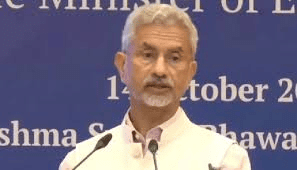
Why in News?
Recently, the Union External Affairs Minister and Labour and Employment Minister launched the updated e-Migrate portal and mobile app.
About e-Migrate Portal:
- The e-Migrate portal is an online platform initiated by the Government of India to assist and manage the migration process for Indian workers seeking jobs abroad.
- This portal aims to create a safe and transparent environment for migrant workers by providing a range of services, including access to information, documentation support, a helpline, and awareness initiatives.
- It emphasizes the promotion of safe and legal migration channels for Indian expatriates.
- The enhanced e-Migrate portal is in line with the United Nations' Sustainable Development Goal 10, which advocates for orderly and responsible migration.
Features
- The upgraded platform includes a 24/7 multilingual helpline, along with a feedback mechanism to ensure prompt resolution of issues faced by workers abroad, particularly in the Gulf region.
- The restructured system integrates with Digilocker, facilitating secure and paperless submission of documents.
- Moreover, a collaboration with Common Service Centres (CSCs) aims to extend immigration services to rural communities in local languages, thereby improving accessibility.
- The portal also serves job-seekers by providing a comprehensive marketplace for overseas employment opportunities.
GS2/International Relations
Canada accuses Indian diplomats?
Source: The Hindu

Why in News?
India-Canada relations have deteriorated significantly following allegations from Justin Trudeau's government that Indian officials were involved in activities endangering public safety. India has strongly dismissed these claims as baseless.
Specific Allegations by Canada Against Indian Diplomats:
- Violent Extremism: Canadian authorities assert that agents linked to the Indian government are engaged in violent extremist actions that threaten both nations.
- Criminal Activity Involvement: The Royal Canadian Mounted Police (RCMP) have accused Indian consular officials of connections to homicides and organized crime, purportedly aimed at instilling fear within the South Asian community in Canada.
- Foreign Interference: Investigations indicate that Indian officials may have misused their positions to gather intelligence on specific individuals or groups in Canada, allegedly relaying this information to India's Research and Analysis Wing (RAW).
- Threats and Coercion: Allegations include coercive tactics, where individuals in Canada faced threats regarding their immigration status or potential risks to family members in India.
- Links to Organized Crime: Claims suggest that Indian intelligence may have provided information to criminal networks in India, associated with gangster Lawrence Bishnoi, who is currently detained in India. These networks are believed to intimidate Canadians of South Asian descent.
- Assassination Involvement: The situation escalated following the assassination of Khalistani activist Hardeep Singh Nijjar in Surrey, which was further connected to the killing of Sukhdool Singh Gill in Winnipeg, both allegedly linked to directives from the Indian government.
India's Response to Canada's Accusations:
- Denial of Allegations: India has categorically rejected the accusations as "absurd" and "preposterous," denying any involvement in criminal activities or targeting the Sikh community.
- Accusations Against Canada: India has countered by accusing Canada of permitting anti-India elements and Khalistani separatist groups to operate freely, which challenges India's sovereignty and security.
- Diplomatic Cooperation Denied: Although India initially agreed to cooperate with the Canadian investigation, it later retracted, denying visas to RCMP officials who planned to provide evidence to Indian authorities.
Retaliatory Actions by Both Countries:
- Expulsion of Diplomats: In retaliation to Canada's expulsion of an Indian diplomat, India responded by expelling a senior Canadian diplomat, which heightened the diplomatic conflict.
- Visa Suspension: India suspended visa services for Canadian citizens due to security concerns for Indian diplomatic personnel in Canada.
- Reduced Diplomatic Presence: The ongoing crisis has led both nations to significantly scale down their diplomatic staff, affecting consular and visa services.
- Diplomatic Disengagement: India's foreign minister has suggested reducing diplomatic interactions with Canada, indicating the deterioration of bilateral relations.
Potential Implications of the Diplomatic Crisis:
- Bilateral Relations: This crisis marks a historic low in India-Canada relations, likely leading to prolonged diplomatic disengagement, which could hinder cooperation in trade, education, and defense.
- Economic Effects: Canada is an important destination for Indian students and the Punjabi diaspora, with potential disruptions in visa processes and consular services.
- Geopolitical Consequences: The dispute may affect India's relations with Western allies, including the United States, which maintains strong ties with both India and Canada.
- Community Division: The Sikh community in Canada may experience increased divisions, with heightened tensions surrounding pro-Khalistan activities potentially fostering anti-India sentiments.
Way Forward:
- Prioritize Diplomatic Engagement: Both nations should focus on diplomatic channels to de-escalate tensions, potentially involving neutral intermediaries to preserve long-term relations.
- Cooperation on Extremism and Crime: Establishing a joint task force to address violent extremism and criminal activity could enhance transparency and trust while respecting each country's sovereignty.
GS3/Environment
What are Swell Waves?
Source: The Hindu

Why in News?
Recently, the Indian National Centre for Ocean Information Services (INCOIS) in Hyderabad has issued extensive advisories for swell waves affecting the Andaman and Nicobar Islands, Lakshadweep Islands, and certain coastal areas.
About Swell Waves:
- A swell refers to the development of long-wavelength waves on the ocean's surface, consisting of a series of surface gravity waves.
- These waves group together, sharing similar heights and periods, allowing them to travel vast distances with minimal alteration.
Formation:
- Swell waves do not form due to local winds but arise from distant storms, such as hurricanes or prolonged periods of strong gale winds.
- During these storms, a significant transfer of energy occurs from the atmosphere to the ocean, resulting in the creation of exceptionally high waves.
- These waves can traverse thousands of kilometers from their origin until they reach the shore.
Features:
- Swells exhibit a narrower spectrum of frequencies and directions compared to local wind-generated waves, as they have traveled away from their source and lost some randomness, taking on a more distinct shape and direction.
- These waves can travel in directions that differ from the wind direction, which is in contrast to wind seas.
- Typically, swell wavelengths do not exceed 150 meters; however, during severe storms, waves longer than 700 meters can occasionally occur.
- Swell waves can occur without any preceding local wind activity, making them somewhat unpredictable.
In India, early warning systems such as the Swell Surge Forecast System, launched by INCOIS in 2020, provide forecasts up to seven days in advance.
|
38 videos|5288 docs|1117 tests
|
FAQs on UPSC Daily Current Affairs: 16th October 2024 - Current Affairs & Hindu Analysis: Daily, Weekly & Monthly
| 1. What are the main concerns India has regarding the surge in Silver and Platinum Alloy imports from the UAE? |  |
| 2. How can increasing the availability of containers enhance India's trade capabilities? |  |
| 3. What are the recent Supreme Court norms aimed at curbing the misuse of the abetment of suicide law in India? |  |
| 4. Who are the Hibakusha and what is their significance in history? |  |
| 5. What role does the Food and Agriculture Organisation (FAO) play in global food security? |  |
















